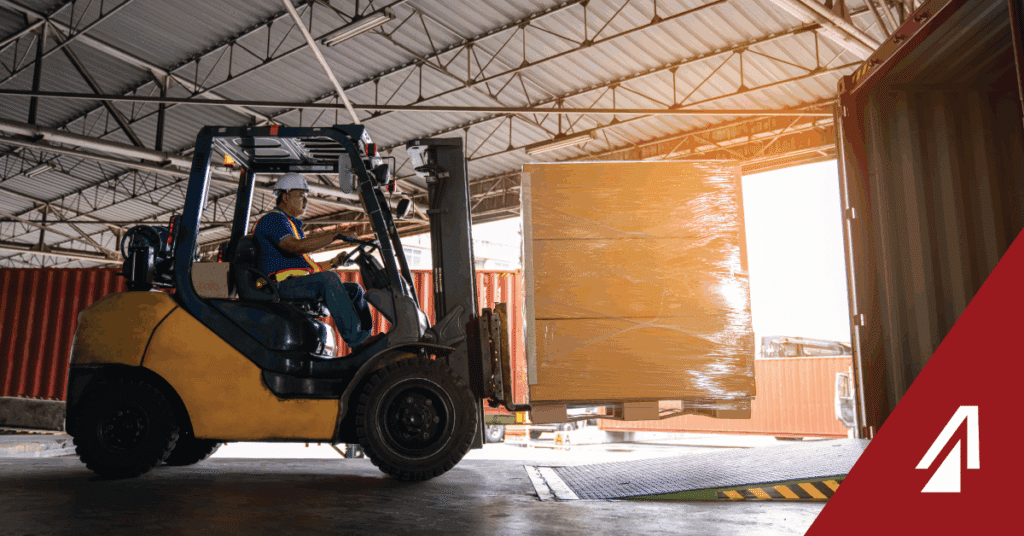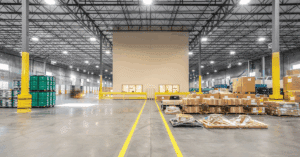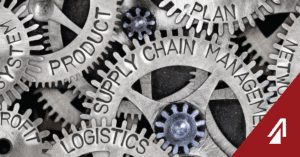The rise of nearshoring has impacted how manufacturers manage their global supply chains, particularly in the automotive, electronics, aerospace, and medical device industries. Within North America, Northern Mexico has become a significant area of growth, especially in cities like Tijuana, Mexicali, Monterrey, and Reynosa. Industrial parks in these areas are now running at record occupancy. The appeal of Northern Mexico lies mainly in the region’s proximity to nearby markets and established trade agreements, as well as access to a skilled labor force.
While nearshoring to Northern Mexico solves some issues, with shorter lead times and reduced ocean freight risk, it also introduces new ones. Industry growth, particularly industries operating in a just-in-time (JIT) environment, requires more frequent freight movements to meet manufacturing delivery times. But those cargo loads often do not fill an entire truckload, leading to higher costs through less-than-truckload (LTL) shipping.
Freight consolidation offers a more innovative solution that balances the approach between full truckload (FTL) and LTL shipping. It can help manufacturers keep logistics costs down while providing more predictable delivery times to production schedules.
The LTL–FTL Dilemma in Cross-Border Logistics
Cross-border shipments from Mexico to the U.S. have historically relied on the two main modes of FTL and LTL. Manufacturers with significant volume that can fill trailers for direct crossing use FTL, while smaller-volume shippers use LTL carriers. Let’s look at these two methods:
- Full Truckload (FTL) – FTL is typically faster with direct linehauls, making it ideal for high-volume, time-sensitive shipments, but is cost-prohibitive if truck capacity is underutilized.
- Less-than-Truckload (LTL) – This method is designed for smaller shipments but often involves longer transit times due to multiple stops, increased handling, and complex customs processing.
With nearshoring, many manufacturers now fall into a middle ground that doesn’t fit neatly into traditional FTL or LTL approaches. Their production volumes may be too large to be handled efficiently through LTL, which results in high per-unit costs. On the other hand, the volume may not be enough to fill a truckload or consistent enough to justify frequent FTL moves. An increasingly valuable alternative is to use freight consolidation, which combines multiple shipments into a full truckload before crossing, and then deconsolidates in the U.S. for final delivery.
Why Nearshoring Makes Consolidation More Critical
The rise of nearshoring is increasing the frequency of shipments, but often reducing the average load size. Plants located closer to their end market usually produce smaller, more frequent batches to manage inventory and align with JIT manufacturing models. This shift in the approach to manufacturing and supply chain management magnifies the inefficiencies of running LTL shipments within the U.S. or across the border.
While LTL can be costly, consolidation allows for shipments from multiple origins or suppliers to be combined into optimized full truckloads. Northbound shipments from Mexico, for instance, are collected at a local consolidation hub and combined with freight headed toward a similar U.S. destination. The consolidated freight then crosses the border under one customs entry and is deconsolidated at a U.S. location for final-mile distribution.
Consolidation addresses both the underutilization of FTL and the high costs of LTL—it speeds up transit times, reduces clearance delays, and balances cost with reliability.
Key Trends Driving Smarter Consolidation
Rising Cross-Border Freight Volume
U.S.-Mexico trade is buzzing with activity in 2025. According to Mexico’s Ministry of Economy, volumes have hit record highs, especially in Northern Mexico hot spots like Baja California, Nuevo León, Coahuila, Tijuana, Ciudad Juárez, and Mexicali. Automotive, aerospace, and medical device manufacturers are fueling much of this growth. With more freight moving across the border, the challenge is to make every trailer count. That means maximizing trailer capacity and cutting down on redundant crossings to keep costs—and delays—in check.
Shift Toward Smaller, More Frequent Shipments
Manufacturers that once were shipping goods monthly or biweekly are now shipping as often as 2-4 times per week to manage inventory levels and keep U.S. inventory lean. This rise in frequency is straining transportation budgets, where LTL carriers face frequent partial loads and higher operating costs, passing those expenses onto manufacturers. Those who opt for FTL but have underutilized trailers waste both money and capacity. Consolidating freight, however, provides an effective solution that balances frequency and costs.
Border Congestion and Customs Bottlenecks
Record volumes are creating heavy traffic and longer wait times at Laredo, Pharr, and other ports of entry. Meanwhile, customs compliance and clearance processes are getting more complex with ongoing tariff changes and the recent implementation of automatic export notifications. By consolidating freight and combining multiple loads into a single customs entry, supply chain managers can reduce congestion and shorten clearance timelines and paperwork processing.
Increasing Need for Flexibility
With new trade agreements, planned infrastructure investments, and unexpected supply chain disruptions, manufacturers are feeling the pressure to be flexible. Companies with adaptable shipping solutions are better equipped to respond to market changes, varying inventory levels, and shifting sourcing strategies. Freight consolidation is a smart way to achieve that operational agility, allowing companies to to adjust their shipments according to demand. The key is to partner with logistics providers that have well-established networks and can easily pivot to meet their customers’ needs. Partnering with logistics providers who have robust networks can make all the differene, enabling companies to pivot quickly when needed.
Technology-Enabled Logistics
Technology is rewriting the rules for how freight gets moved and how smarter consolidation strategies can increase efficiency. Tools like data analytics, artificial intelligence, and automation are making it possible to match loads more efficiently, maximize trailer space, and streamline shipping processes. Dynamic routing, for instance, finds the most efficient shipping routes and maximizes capacity, while real-time tracking maintains shipment visibility. By using a tech-driven approach to supply chain management, businesses can make smarter decisions and avoid added costs from delays or misrouting.
Sustainability Pressures
Having insight into a company’s carbon footprint is becoming increasingly expected in the market, influencing a focus on improving sustainability practices and reducing carbon emissions. Fewer trucks on the road and fuller trailers mean lower emissions per unit shipped. In response, many OEMS now require suppliers to report on carbon output and plans to lower emissions. The foundational approach to freight consolidation better aligns with the goals of ESG-conscious buyers—leading to fewer trips and maximizing capacity. As companies become more focused on their environmental impact, consolidation is not just a cost strategy, but a compliance necessity.
As nearshoring continues to reshape the global supply chain and transportation strategies, companies must adapt to new demands and challenges. Many manufacturers operate in a space that’s not quite big enough for truckloads, but still need an effective solution over traditional LTL. By implementing consolidation, manufacturers can effectively combine smaller shipments into larger loads, reaping the benefits of both worlds. This approach not only reduces transportation costs but also streamlines logistics and simplifies customs processes to provide greater control over delivery timelines.
With more than 30 facilities throughout North America and Europe, ProTrans offers a well-established network and deep expertise in cross-border transportation. Contact our team today to learn more about maximizing efficiency while minimizing costs in today’s fast-paced market.



